Politics & Economy
The Assassination of Deputy Trần Văn Văn on December 7, 1966 (Part 1)
Published on
By
Lam Vinh The
The Assassination of Deputy Trần Văn Văn on December 7, 1966 (Par1, Part 2)
Vinh-The Lam, M.L.S. Librarian Emeritus, University of Saskatchewan, Canada
7-12-66.— Dân-biểu Trần Văn Văn bị hai thanh niên cưỡi Honda bắn tử-thương, hồi 9 giờ sáng nay trước nhà đường Phan Thanh Giản, Sài Gòn. Một hung thủ bị bắt.
(Translation: Deputy Trần Văn Văn was shot dead by two young men riding a Honda at 9 a.m. in front of his house on Phan Thanh Giản Street, Saigon. One of the assassins was arrested.)
(Source: Đoàn Thêm. 1966: việc từng ngày (1966: chronology), p. 220.[1]
The assassination of Mr. Trần Văn Văn, Deputy of the Constituent Assembly (CA), on December 7, 1966, was an important political event, causing a lot of debates at that time. The Nguyễn Cao Kỳ government accused the Viet Cong for this terrorist act and sentenced to death the assassin caught on spot. The media, even Deputy Trần Văn Văn’s family, thought that Mr. Văn had been eliminated by the government for his constant opposition to it. Now, after more than half a century, based on various sources of documents, this author is trying to know the truth of this affair. The findings of this study indicate indisputably that the assassination was carried out by Communist agents under the order from the Central (Communist) Party Office in South Vietnam (Trung Ương Cục Miền Nam or COSVN). Unfortunately, the clumsy handling of the event by the National Police under General Nguyễn Ngọc Loan led the victim’s family and the press to believe that the government was behind it.
Deputy Trần Văn Văn’s Biographical Sketch
Mr. Trần Văn Văn, born on January 2, 1908, “tại làng Tân Lộc Đông (gọi là cù lao Cát), quận Thốt Nốt, tỉnh Long Xuyên, con của cụ Trần Võ Duy, tri huyện và bà Lý Thị Hóa, trong một gia đình 5 con.” [2] (Translation: in East Tân Lộc village (aka Sandy Isle), Thốt Nốt district, Long Xuyên province, son of Mr. Trần Võ Duy, District Head, and Mrs Lý Thị Hóa, in a family of 5 children).
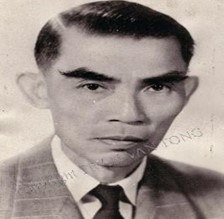
Portrait of Mr. Trần Văn Văn
He spent his high-school years at the Lycée Chasseloup-Laubat in Saigon. (This school was later renamed Jean-Jacques Rousseau High School; under the Second Republic of Vietnam, after it was turned over by the French Government to the Government of the Republic of Vietnam, the Ministry of National Education gave it a new name: Lê Quý Đôn Educational Center). In 1926, he was expelled from the Lycée because of his participation in the school boycott during the funeral of the patriot Phan Châu Trinh. His family sent him to France to finish high school. After that, he attended and graduated from one of the famous French “Grandes Écoles” (Big Schools), the Paris HEC (Hautes Études Commerciales – High Commercial Study).
He began his political career in May 1945 when he accepted to serve as Director of Cabinet (i.e.Chief of Staff) for Mr. Hồ Tá Khanh, Minister of Economy in the first Vietnamese Government led by Prime Minister Trần Trọng Kim.[3] After the Japanese surrendered to the Allies, and the French returned to Vietnam, he joined the resistance movement against the French for a short period of time and then went back to Saigon. On July 1, 1949, he joined the Bảo Đại Government as Minister of National Economy and Planning.[4] After a while, he realized that the French were not sincere in their promise to grant real independence to Vietnam, and, together with Mr. Phan Khắc Sửu, Minister of Agricultural, Social and Labour Affairs, he submitted his resignation. During the post-resignation time, he and his group of friends, which included Messrs. Phan Khắc Sửu, Trần Văn Hương, Hồ Văn Nhựt, Huỳnh Kim Hữu, Nguyễn Lưu Viên, Nguyễn Ngọc An and Ngô Ngọc Đối, often met and discussed the political situation of the country. When he came back to Vietnam in July 1954, Ngô Đình Diệm invited him and his friends to join the government. Most of his friends accepted Diệm’s offer; he was the only person who declined the invitation. Not for long before all of his friends resigned after they had found out that Diệm’s government moved deeper and deeper into some form of unpopular dictatorship, which had a very detrimental effect on the national development and on the fight against the Communists as well. He and his friends prepared a petition, and in the morning of April 26, 1960, he and one friend in the group, Mr. Phan Khắc Sửu, brought that petition to the Independence Palace, asking the palace guards to submit it to President Ngô Đình Diệm. Mr. Sửu and he then went to Hotel Caravelle to hold a news conference with the remaining members of the group. After that, therefore, the international media gave his group the collective name of Caravelle Group, and the petition was called the Caravelle Declaration. Although the criticism in the petition was clear and to the point, its tone was quite moderate and polite, but still it was completely rejected by the government. Then, taking advantage of the failed military coup by the paratroopers of November 11, 1960, and although knowing that the Caravelle Group did not have anything to do with the coup, the Ngô Đình Diệm Government arrested them and put them in jail for some time. In July 1963, the Caravelle Group was tried by the Special Military Tribunal and found not guilty.[5]
After the successful military coup of November 1, 1963 overthrowing the Ngô Đình Diệm Government, Mr. Trần Văn Văn was appointed by Lieutenant-General Dương Văn Minh, Chairman of the Military Revolutionary Council, as member of the Council of Notables that was tasked to work on a new constitution for the Republic of Vietnam.[6] The promising work of the Council was untimely shut down by the coup of Lieutenant-General Nguyễn Khánh. After more than six months in power and struggling through a period of total political chaos, General Khánh had to form a new governing body called the Provisional Committee for the Leadership of the Nation and the Armed Forces (PCLNAF) with General Minh as Chairman. On September 8, 1964, the PCLNAF created the High National Council (HNC) including 16 members and with the “nhiệm vụ triệu tập Quốc dân Đại hội, soạn thảo Hiến chương, thực hiện các cơ cấu quốc gia, và làm cố vấn cho Chính phủ cùng Ủy Ban Lãnh Đạo Lâm Thời QGQL.” [7] (Translation: “task to convene the National Assembly, to work on a new Charter, to establish the national governmental structure, and to serve as an advisory board for the Government and the PCLNAF”). Mr. Trần Văn Văn was one of these 16 members of the HNC. At the first meeting of the HNC, Mr. Văn was elected Secretary-General of the Council. The HNC made a very important contribution during that extremely difficult political situation: completing the Provisional Charter of October 20, 1964.[8] Based on this Provisional Charter, the first civil government of Prime Minister Trần Văn Hương was established on November 4, 1964. But the Buddhists incited the students and youth to oppose the government. At the same time, the “Young Turks,” [9, 10] born out of General Khánh’s scheme to hold on to power, also created many difficulties for the Trần Văn Hương Government. Because their demand of retiring the old generals was rejected by the HNC, the “Young Turks” abolished the Council and arrested a number of its members including Mr. Trần Văn Văn.[11] The Trần Văn Hương Government was then replaced by the Phan Huy Quát Government. With the political impasse created by the cabinet crisis of the Phan Huy Quat Government in May 1965, the power fell back to the hands of the military, which led to the establishment of the Nguyễn Cao Kỳ’s War Cabinet on June 19, 1965.
After the Revolt in Central Vietnam in the summer of 1966, the Nguyễn Cao Kỳ Government had to call elections for the CA. Mr. Trần Văn Văn ran for a seat in Saigon and was elected. When the CA began its operations, Mr. Văn and other deputies from the South formed a Bloc named Renaissance of the South Bloc after the Movement for the Renaissance of the South, which had been created by southern politicians and notables following the Nguyễn Cao Kỳ’s cabinet crisis leading to the resignation of 6 southern commissioners (i.e. ministers) in protest of the abuse of power by General Nguyễn Ngọc Loan, right-hand man of Prime Minister Nguyễn Cao Kỳ.[12] When the CA discussed Chapter IV for the Executive Branch, of the draft constitution, the Renaissance of the South Bloc suggested that the minimum age for candidates of the presidency be 40 with the intention to eliminate Nguyễn Cao Kỳ’s possible candidacy (Nguyễn Cao Kỳ was only 37 years old at the time) but their suggestion was defeated. Motivated by his personal experience with the military (through the rebellious and almost traitorous dissolution of the HNC by the “Young Turks,” and illegal arrest of a number of its members—including himself—), Mr. Trần Văn Văn was always highly critical of the Nguyễn Cao Kỳ Government in his statements in the CA. He also made several general statements against the military government, and revealed many times that he would run for the presidency after the new constitution was promulgated.[13] For both U.S. and Vietnamese media, and the Vietnamese people as well, Mr. Trần Văn Văn was believed to be a thorn that needed to be removed in the eyes of the Nguyễn Cao Kỳ – Nguyễn Ngọc Loan clan.
The Assassination
In the morning of December 7, 1966, Mr. Văn left his house at no. 6 Phan Thanh Giản Street to go to work at the National Assembly in his American-made Desoto car. When his car was approaching the intersection of Phan Đình Phùng and Phan Kế Bính Streets, two young men riding a Honda scooter approached his car, fired three shots and killed Mr. Văn. The two men were chased by some security people. Their scooter fell, one man escaped and the other one was caught. The caught culprit gave his name as Võ Văn En, 20 years old.
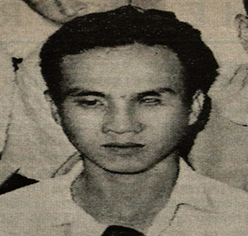
Portrait of Võ Văn En
At 6:00 p.m. of December 7, 1966, the Directorate General of National Police (DGNP) presented Võ Văn En to the media in a press conference presided over by Brigadier-General Nguyễn Ngọc Loan, Director-General of the DGPN. Võ Văn En was introduced as the culprit who fired the shots killing Deputy Trần Văn Văn, and was apprehended on the spot after a police chase through a neighbourhood of District 1.
Following are reports of witnesses of the assassination:
Report by Mr. Văn’s driver [14]
“Trước hết, tài xế lái xe cho ông Trần Văn Văn là ông Trần Văn Xuân cho biết: như thường lệ, sáng ngày 7-12-1966, ông ta lái xe đưa ông Văn từ nhà ở số 8 đường Phan thanh Giản ra Quốc hội. Khi chạy tới góc đường Phan kế Bính – Phan đình Phùng thì có một chiếc Honda có hai người ngồi trên chạy ngược chiều và sát lại bên xe ông. Rồi liền đó ông nghe tiếng súng nổ. Sợ quá, ông cúi rạp xuống gầm xe, khi nghe thấy có thêm hai tiếng súng nổ nữa, ông liền tông cửa xe chạy ra ngoài và tri hô ầm lên. Lúc đó ông Văn bị thương nằm thoi thóp ở băng sau. Bắn xong, hai tên sát nhân phóng xe chạy, trong lúc hoảng hốt ông Xuân Vẫn còn nhìn thấy một người cưỡi xe Honda cầm súng đuổi theo 2 tên sát nhân. Ông Xuân liền vội lái xe chở chủ tới nhà một bác sĩ tư gần đó cứu cấp nhưng ông này đi vắng nên ông Xuân đành lái xe đến Ty Cảnh sát Quận Nhất trình sự việc và sau đó chở ông Văn vào bệnh viện Grall. Theo lời ông Xuân thì chính tên En đã cầm súng bắn ông Văn vì ông nhận ra dáng người nhỏ bé với bộ mặt rỗ và con mắt chột của y.”
(Translation: “First of all, Mr. Trần Văn Xuân, Mr. Trần Văn Văn’s driver, stated: as usual, in the morning of December 7, 1966, he drove the car to bring Mr. Văn from his house at no. 8 Phan Thanh Giản Street to the National Assemby. When the car arrived at the intersection Phan Kế Bính – Phan Đình Phùng, a Honda scooter driven by two young men ran from the opposite direction and got close to one side of his car. Right at that moment he heard a gunshot. Too scared, he lowered his body to the floor of the car, when he heard two more shots, he opened the car’s door, got out of the car and cried for help. At that moment, Mr. Văn was seriously injured, lying down on the back bench. After having fired these shots, the two assassins rushed their scooter out of the scene, even still in panic, Mr. Xuân still noticed that one man on a Honda holding a gun chased the two assassins. Mr. Xuân drove his boss to the house of a private doctor nearby for immediate treatment but the doctor was not in the house, thus Mr. Xuân drove to the District 1 Police Station to report the event, and then drove Mr. Văn to Grall Hospital. According to Mr. Xuân, it was En who held and fired the gun because he recognized En’s small body with his pock-marked face and his defect eye.”
A hard chase [15]
“Nhân viên an ninh quận Nhất Lê quang Thành, người đã chứng kiến vụ hạ sát ông Trần văn Văn và cũng là người đầu tiên đuổi bắt tên Võ văn En cho biết hồi 9g5 khi ông ta đi xe Honda tới góc đường Phan Kế Bính – Phan Đình Phùng (lúc bấy giờ đường đương kẹt xe) thì thấy 1 người lạ mặt đương cầm súng bắn vào cửa trái một chiếc xe hơi. Bắn xong, hung thủ ngồi lên phía sau một chiếc Honda 50 rồi phóng vào đường Phan kế Bính. Ông Thành tức tốc phóng xe (Honda 50) đuổi theo hung thủ qua đường Đinh tiên Hoàng rồi quẹo về đường Nguyễn thành Ý. Giữa lúc đó có hai người Mỹ ngồi trên xe hơi thấy vậy cũng đuổi theo. Và tại đường Nguyễn Thành Ý, tên VC ngồi sau xe Honda đã bắn về phía ông Thành một phát, tức thì ông Thành cũng bắn trả liền. Sau đó, hai tên hung thủ phóng xe ngược chiều chạy ra đường Mạc đĩnh Chi. Tới đường Phùng Khắc Khoan ông Thành bắn thêm một phát nữa và la lên: “VC ! VC ! Bắt lấy nó.” Một nhân viên an ninh có phận sự canh gác tại khu vực này (vì tại đây gần tư dinh ông Đại sứ Mỹ) dơ khẩu Carbine định bắn. Hai tên hung thủ thấy thế sợ quá liền quẹo vội xe và đâm phải lề đường bị té. Chúng liền bỏ xe, vứt súng chạy thục mạng. Tên Võ Văn En bị té dài vừa ngóc đầu lên chạy thì cảnh sát đuổi tới bắt được. Còn theo ba Cảnh sát viên Trần văn Xuân, Dương Trường Khiết và Đỗ văn Út cho biết lúc bấy giờ các ông đương ngồi trên chiếc xe Díp có phận sự trực tại góc đường Tự Đức – Mạc đĩnh Chi thấy ông Thành chạy qua la liền lái xe díp rượt theo 2 hung thủ tới trước Hội Việt Mỹ và nhờ có một cảnh sát viên gác tại đây là ông Nguyễn văn Thôi chặn lại. Hai tên khủng bố thấy thế sợ quá phóng xe vứt súng chạy thoát thân. Ông Khiết còn cho biết chính tên En đã bắn trã lại cảnh sát rồi vứt súng đi. Khẩu súng của hung thủ do Cảnh sát viên Thôi bắt được còn tên En thì do ông Thành bắt.”
(Translation: “Mr. Lê Quang Thành, District 1 security agent, who witnessed the assassination of Mr. Trần Văn Văn and who was also the first agent to carry out the chase of Võ Văn En, said that at 9:05, he was riding his Honda to the intersection Phan Kế Bính – Phan Đình Phùng (there was a traffic jam at the intersection right at that time) when he saw an unknown man holding a gun and firing into the left-side door of a car. After having fired his gun, the man got on the back seat of a Honda 50 scooter and then the scooter rushed into Phan Kế Bính Street. Mr. Thành immediately rushed his scooter (also a Honda 50) and began the chase going first through Đinh Tiên Hoàng Street and then turning into Nguyễn Thành Ý street. Right at that moment, two Americans in a car saw the action and also got into the chase. While still on Nguyễn Thành Ý Street, the VC on the back seat fired one shot toward Mr. Thành, and Mr. Thành fired back right away. The two assassins then took the opposite direction and turned into Mạc Đĩnh Chị Street. When reaching Phùng Khắc Khoan Street, Mr. Thành fired another shot and shouted: “VC ! VC ! Arrest them !” A security agent on guard in this quarter (which included the American Ambassador’s residence) heard that shout and raised his Carbine in order to shoot. The two assassins were really scared, made a quick turn, hit the sidewalk and their scooter fell. They left the scooter, threw the gun, and ran. Võ Văn En fell hard, tried to get up but was caught by the police. The three police officers, Trần Văn Xuân, Dương Trường Khiết, and Đỗ Văn Út, reported that at the time they were on duty in their Jeep at the intersection Tự Đức – Mạc Đĩnh Chi. They saw Mr Thành riding his scooter past them and shouting. They drove their Jeep and chased the two assassins to the front door of the Vietnamese American Association. A policeman named Nguyễn Văn Thôi, on guard at the door, tried to stop the VC. The two terrorists were scared, threw their gun and rushed their scooter to escape. Mr. Khiết added that En fired back to the chasing police before throwing the gun. The culprit’s gun was retrieved by policeman Thôi, and En was caught by Mr. Thành.”
This press conference by General Loan did not achieve its expected goal because it, in fact, brought about additional questions. First, when they saw that Võ Văn En was a small guy, skinny, almost blind, the press could hardly believe that En could have been the assassin who had fired such three accurate shots. Second, reports of the chase by different security people involved did not match up.
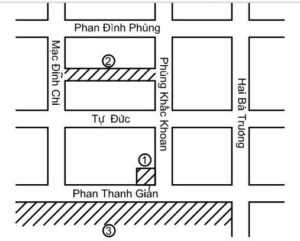
Map of Tự Đức – Phùng Khắc Khoan area Notes: 1: American Ambassador’s Residence; 2. Vietnamese-American Association; 3. Mạc Đĩnh Chi Cemetery
Third, a close look at the above map of the Tự Đức – Phùng Khắc Khoan area of District 1, one can see that there was absolutely no small alley in the quarter that could have provided an escape route for the second terrorist. Besides, it was hard to explain why there was a surprisingly large number of security people in the area at that moment (altogether there were six people: Thành, Xuân, Khiết, Út, Thôi and another without being named, who was the person responsible for the security of the area having the U.S. Ambassador’s residence). Then how could the second terrorist have escaped? Moreover, right before the press conference began, “Chuẩn tướng Loan đã xác định mục đích cuộc họp báo này là để đánh tan những dư luận có thể gây ra những vụ viểu lầm đáng tiếc cho cơ quan mà ông đương phụ trách.” [16] (Translation: “Brigadier-General Loan has determined that the objective of this press conference was to annihilate any public opinion, which could cause regrettable misunderstandings for the agency under his direction.”). This statement by General Loan determined that, within less than 12 hours, from after 9 a.m. to before 6 p.m. of Wednesday, 7-December-1966, there was a public opinion showing that the people or the media already had some negative doubt toward the DGNP under General Loan regarding the assassination of Mr. Văn.
Fourth, although at the press conference, the DGNP’s forensic-test specialist confirmed that the gun (a 7.65 Walther) seized at the scene during the apprehension of En was the gun that had fired on Mr. Văn, and also there was trace of gun powder on En’s hand, En, who acknowledged that he was a VC from Củ Chi, still denied that he himself had shot Mr. Văn, and, in answering the press he mentioned he only rode the Honda, and the person shooting Mr Văn was the person who had escaped.
Facing with these questions regarding this assassination, and very probably under pressure from the Renaissance of the South Bloc, the CA decided to create the Committee for the Investigation of the Assassination of Deputy Trần Văn Văn under the Chairmanship of Deputy Lý Quí Chung, a member of the Renaissance of the South Bloc. Mr. Chung requested the DGNP organize for him “buổi gặp riêng với “thủ phạm” Võ Văn En mà không có sự chứng kiến của bất cứ người thứ ba nào.” [17] (Translation: “a special meeting with the “culprit” Võ Văn En without the presence of a third person.).
In this meeting, Mr. Chung advised En, if he was not the culprit who had shot Mr. Văn, not to waver from that position, otherwise he might be liquidated. Mr. Chung never thought that the whole conversation between him and En was secretly taped. The next morning, when he went to work at the CA, he found that on the desks of all CA deputies a copy of a document containing the transcript of his conversation with En together with the text of an accusation that he has encouraged En to reverse his testimony and a request that the CA have a measure against him. Mr. Phan Khắc Sửu, Speaker of the CA, ordered to confiscate the document under the pretext that it was a violation of the CA’s bylaws since it was not signed by the Speaker and authorized for circulation. In spite of this intervention by Mr. Sửu, the Committee was later disbanded to avoid a serious political impasse. This event has created more doubts among the anti-Ky-Loan people.
In the meantime, the Communists, through Radio Hanoi, denied any involvement in the assassination of Mr. Văn. “Ba ngày liên tiếp 7, 8 và 9.12. 1966, Đài Hà Nội tố cáo «Dù khác chính kiến, dù không đồng quan điểm chính trị với ông Trần Văn Văn, chúng ta không bao giờ can dự vào việc ám sát ông Văn, đây là hành động dơ bẩn của bọn tướng lãnh khát máu ở Sàigon.» [18] (Translation: “In three consecutive days, 7, 8, and 9 December 1966, Radio Hanoi denounced “Although we do not share the same political point of view with Mr. Trần Văn Văn, we never get involved in the assassination of Mr. Văn, this is the dirty work of the blood-thirsty generals in Saigon.”).
Mr. Văn’s family, especially through Mrs. Văn’s statement made at his funeral, did not believe what was reported by the DGNP at the press conference. They thought that En was only a scapegoat. Following is the original full-text of what Mrs. Văn said to Lieutenant-General Nguyễn Văn Thiệu when the latter, on behalf of the National Leadership Committee that he chaired, came to present his condolences at Mr. Văn’s funeral: “… Sau cùng tôi xin Trung Tướng cho điều tra ai là kẻ chủ mưu giết chồng tôi, nay tôi vì thân cô thế yếu không trả thù cho chồng được, nhưng tôi tin rằng cái gì cũng có nhơn quả, ai giết chồng tôi thì kẽ khác sẽ giết họ. Rồi ông Thiệu trở lại salon ngồi và trước khi ra về ông chào và nói với bà Văn rằng: tôi cũng nghĩ như bà, cái gì cũng có nhơn quả.” [19] (Translation: “… Finally, General, I’d like to ask you to investigate and find out who was behind the assassination of my husband. I am alone and without any power and I cannot take revenge on my husband, but I believe in the law of cause and consequence, whoever kills my husband will be killed by someone else. Mr. Thiệu then returned to sit in the living room, and before taking leave, he came to say good bye to Mrs. Văn and said: “Like you, I also believe in the law of cause and consequence.”)
The Funeral of Deputy Trần Văn Văn
Throughout the period of about 20 years of existence of the republic regime in the South, there has never been a funeral that was such grandiose, solemn, and with the attendance of so many notables and politicians of the Republic of Vietnam like the funeral of Deputy Trần Văn Văn in the morning of Sunday, December 11, 1966. The official report produced by the Vietnam National Press was re-printed in the main Saigon daily newspaper Chính Luận as follows: [20]
”Khởi hành đúng 8 giờ 30 phút từ tang gia số 8 đường Phan Thanh Giản, đoàn xe tang được di chuyển theo lộ trình Phan thanh Giản – Phan kế Bính – Phan đình Phùng – Mạc đĩnh Chi để vào nghĩa trang Đô Thành… Trên ba trăm chiếc xích lô đạp chở vòng hoa phúng điếu của thân bằng quyến thuộc, các nhân vật trong và ngoài chính quyền, các đoàn thể tôn giáo, nam nữ sinh viên, Hội Liên Trường đã khiến cho đám tang vô cùng trọng thể…” (Translation: “Leaving exactly at 8:30 a.m. the mourning family house at no. 8 Phan Thanh Giản Street, the hearse convoy made its itinerary along Phan Thanh Giản – Phan Kế Bính – Phan Đình Phùng – Mạc Đĩnh Chi to enter the Capital City Cemetery… More than 300 pedicabs carrying funeral flower arrangements presented by family members, personalities inside and outside of government, religious bodies, student associations, Old Southern Schools Association have made the funeral extremely solemn…”).
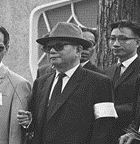
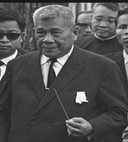
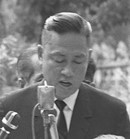
Mr. Phan Khắc Sửu Mr. Trần Văn Hương Mr. Trần Văn Đôn
Attending the Funeral Attending the Funeral Delivering his Eulogy
The number of people attending the funeral was in the thousands, including almost all of the top notables and politicians of the Republic of Vietnam: Mr. Phan Khắc Sửu, Speaker of the CA with all of 116 CA Deputies; Lieutenant-General Phạm Xuân Chiểu, Secretary-General of the National Leadership Committee, representing its Chairman, Lieutenant-General Nguyễn Văn Thiệu; Dr. Nguyễn Lưu Viên, Vice-Chairman of the Central Executive Committee, representing its Chairman, Major-General Nguyễn Cao Kỳ; former Lieutenant-General Trần Văn Đôn, representing the Old Southern Schools Association; the Caravelle Group members such as former Prime Minister Trần Văn Hương, Dr. Trần Văn Đỗ, Lawyer Trần Văn Tuyên, Father Hồ Văn Vui, etc.
You may like

Reflections on New Era of National Rise by Vietnam General Secretary Tô Lâm

Of Space & Place: On the Nationalism(s) of Tuan Andrew Nguyen’s “Our Ghosts Live in the Future”

Postwar Music In Vietnam And The Diaspora

Translation: The Decision in 2013 of the Central Committee of the Communist Party of China on Certain Major Issues Concerning Comprehensively Deepening Reform

Thủ Đức Demonstration High School: A Modern Educational Policy and Teaching Method of the Republic of Vietnam

Vietnam’s unresolved leadership question

Rethinking History and News Media in South Vietnam

“The Vietnam War Was an Unwinnable War”: On Factuality and Orthodoxy

Pandemics and Morality: Lessons from Hanoi

Democracy in action: The 1970 Senatorial elections in the Republic of Vietnam (Part 1)
US-VIETNAM REVIEW
-

 Politics & Economy4 years ago
Politics & Economy4 years agoVietnam’s unresolved leadership question
-

 Politics & Economy2 years ago
Politics & Economy2 years agoRethinking History and News Media in South Vietnam
-

 After 19751 year ago
After 19751 year ago“The Vietnam War Was an Unwinnable War”: On Factuality and Orthodoxy
-

 Society & Culture5 years ago
Society & Culture5 years agoPandemics and Morality: Lessons from Hanoi
-

 ARCHIVES5 years ago
ARCHIVES5 years agoDemocracy in action: The 1970 Senatorial elections in the Republic of Vietnam (Part 1)
-

 Politics & Economy4 years ago
Politics & Economy4 years agoThe Limit to U.S.-Vietnam Security Cooperation
-

 Politics & Economy5 years ago
Politics & Economy5 years agoNational Shame: How We (Americans) can learn from Nguyễn An Ninh
-
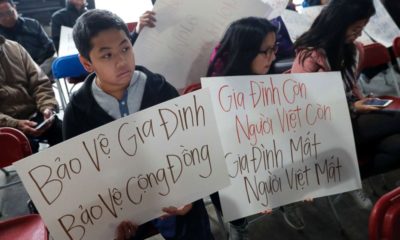
 Vietnamese-America4 years ago
Vietnamese-America4 years agoDeporting Vietnamese Refugees: Politics and Policy from Bush to Biden (Part 1)


